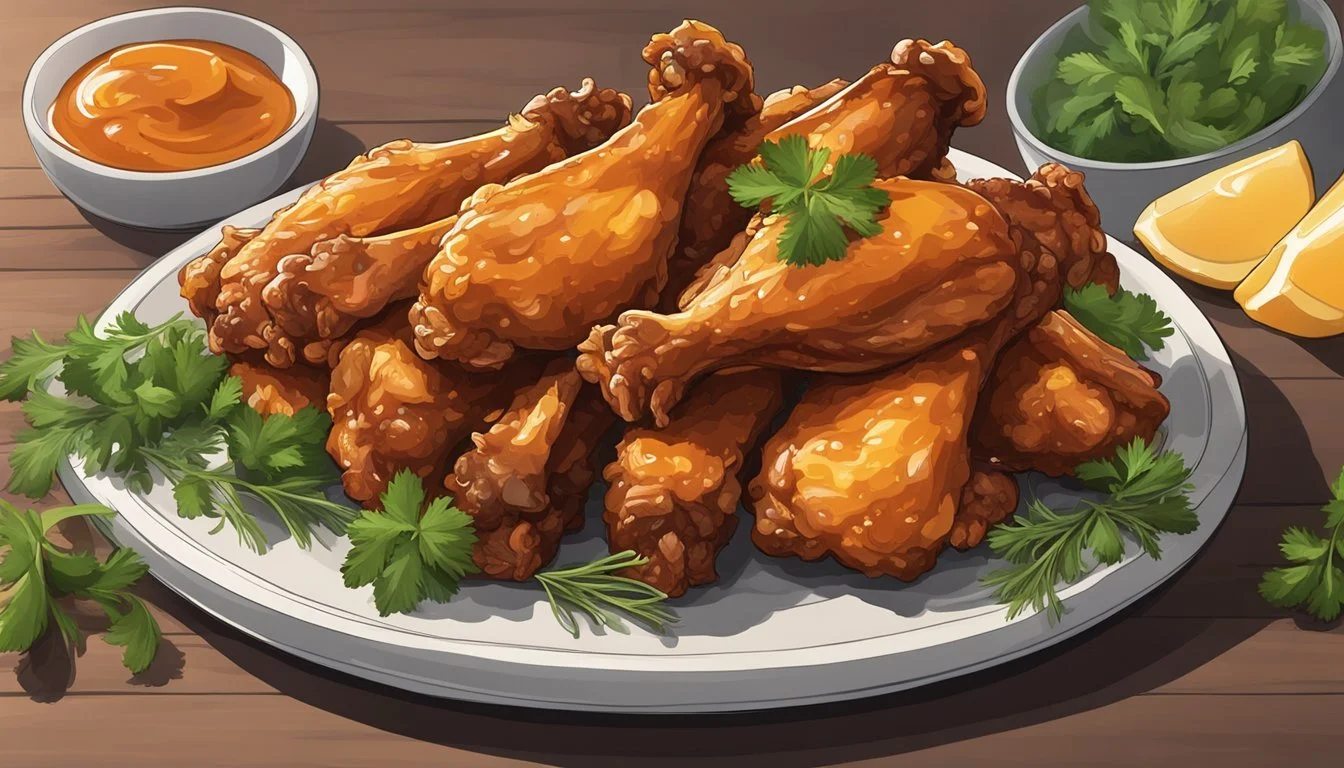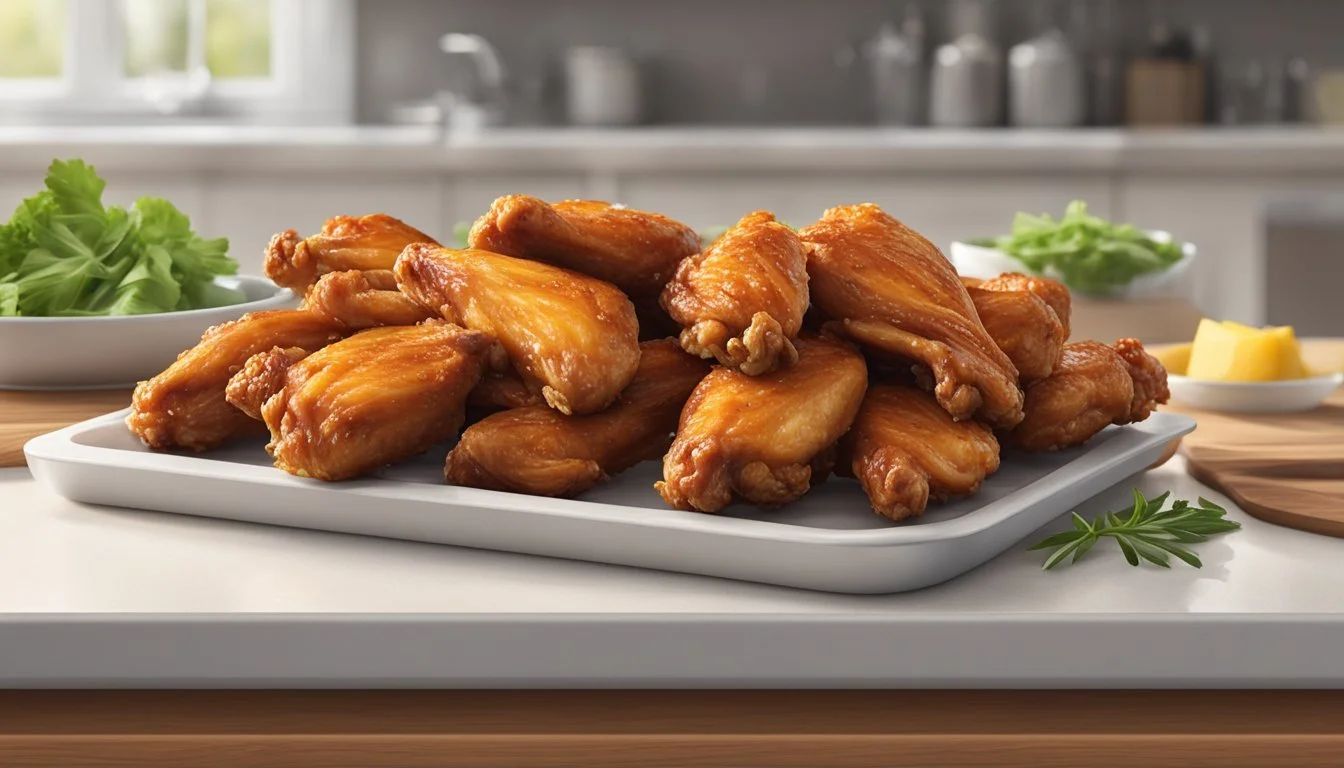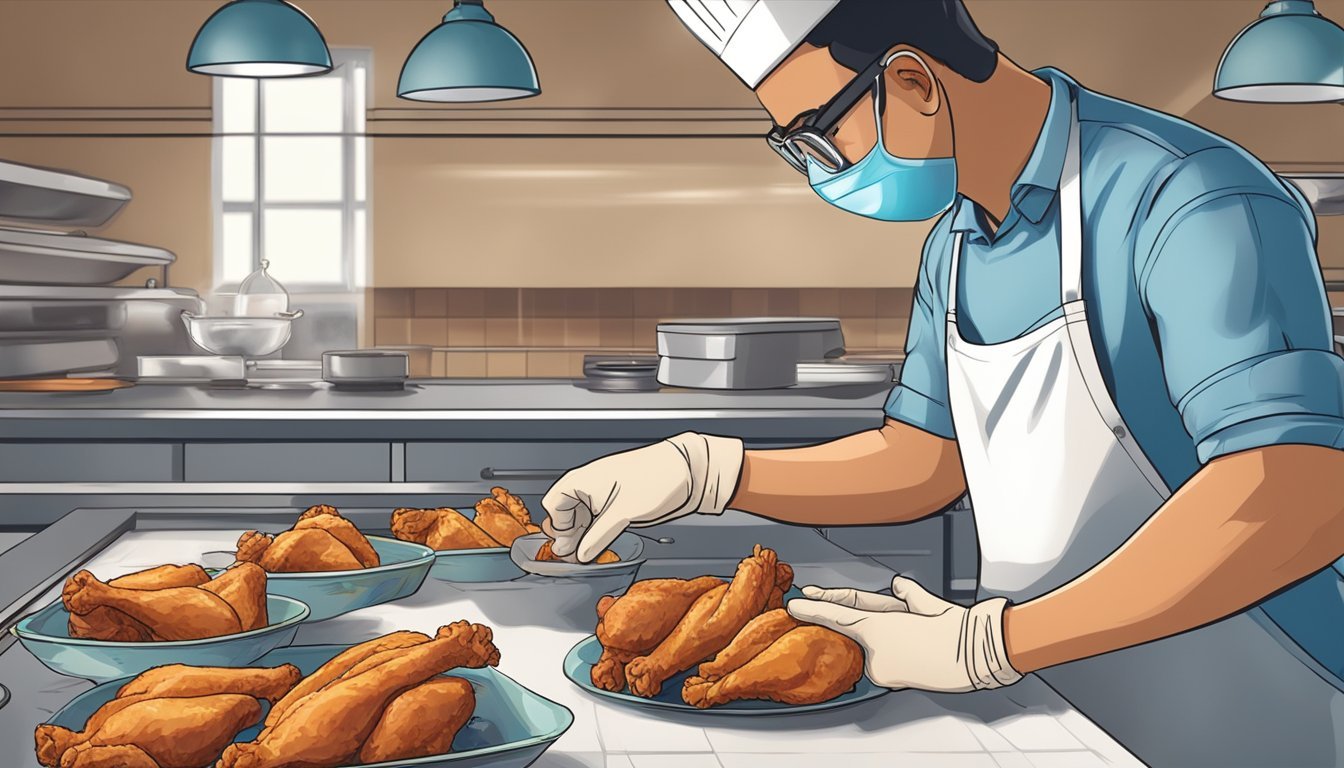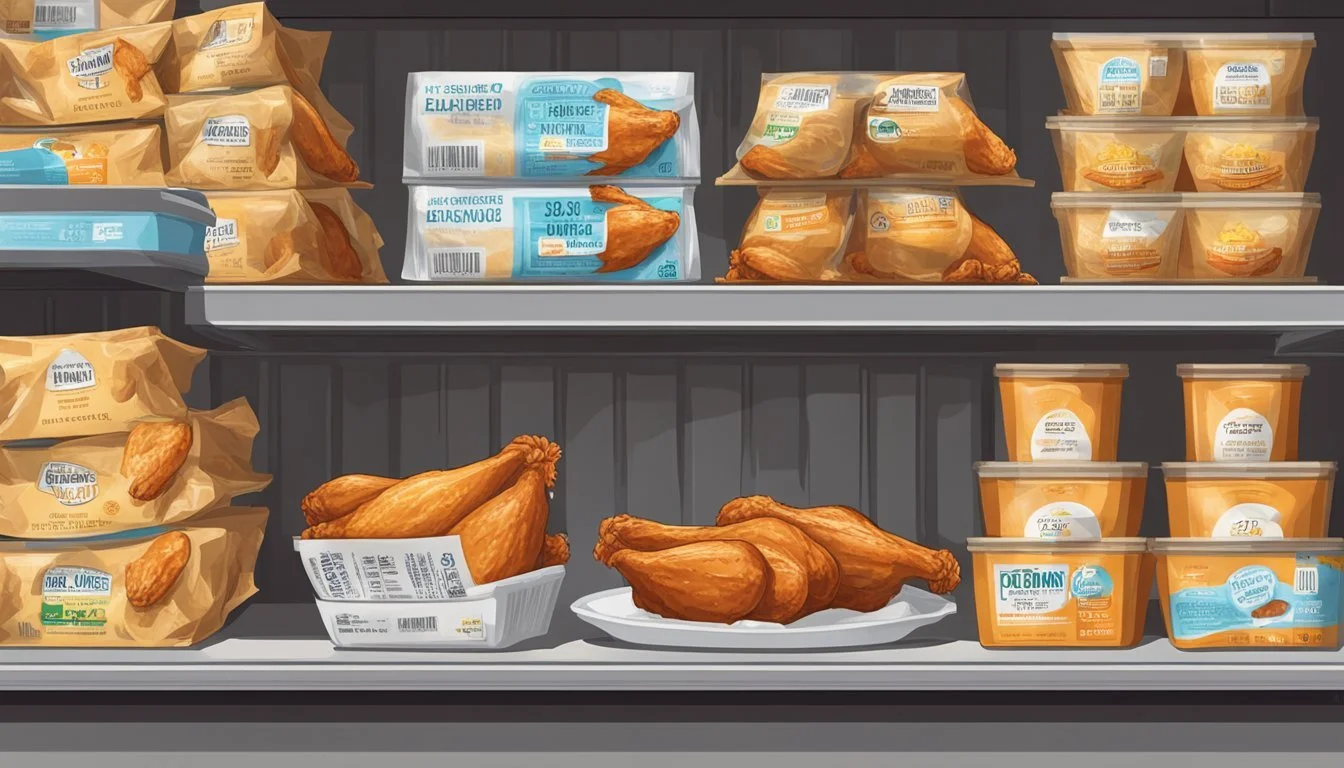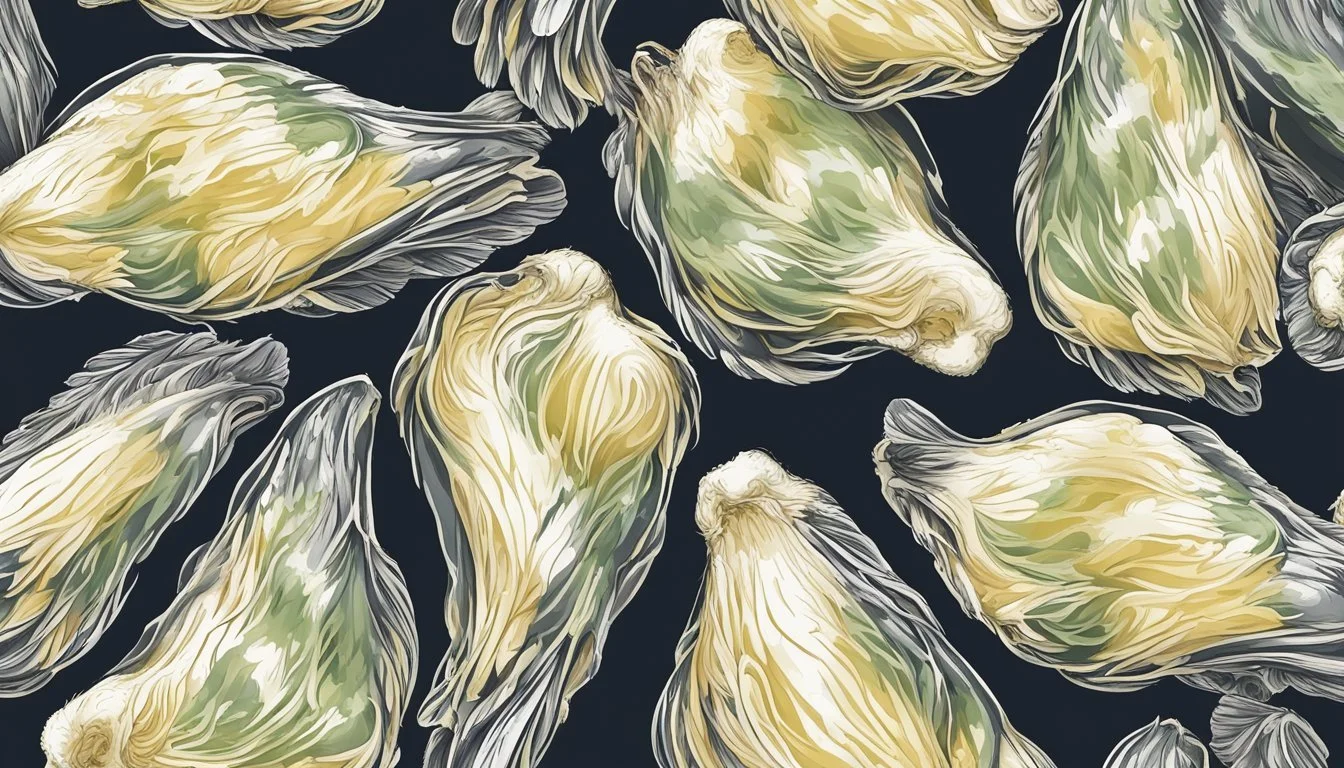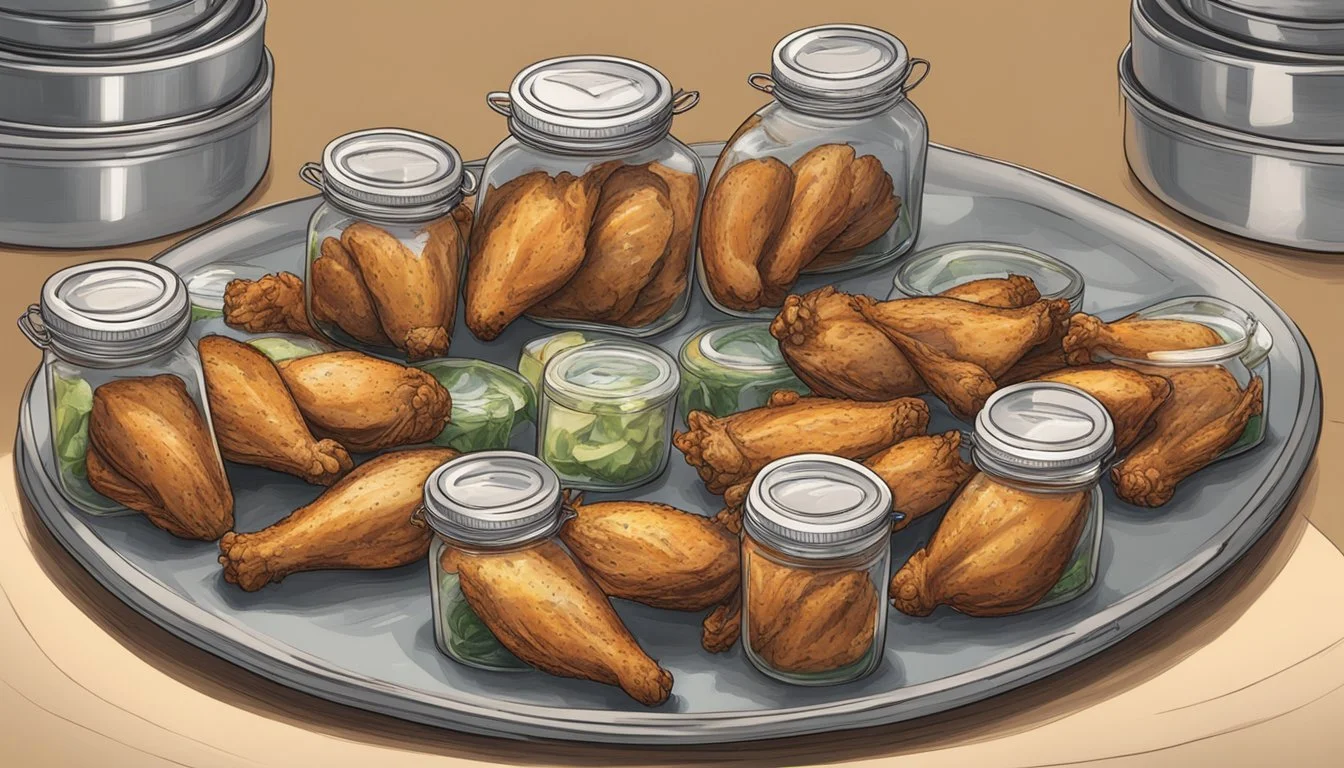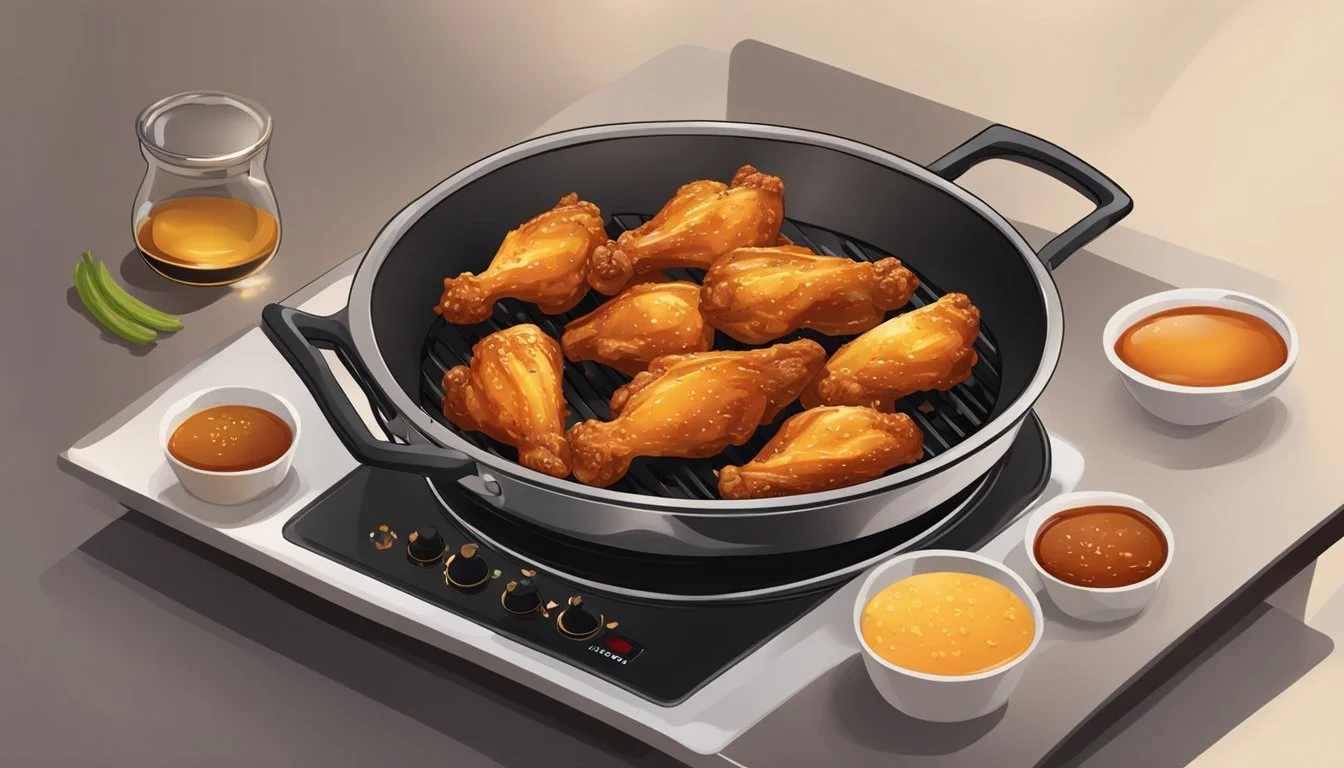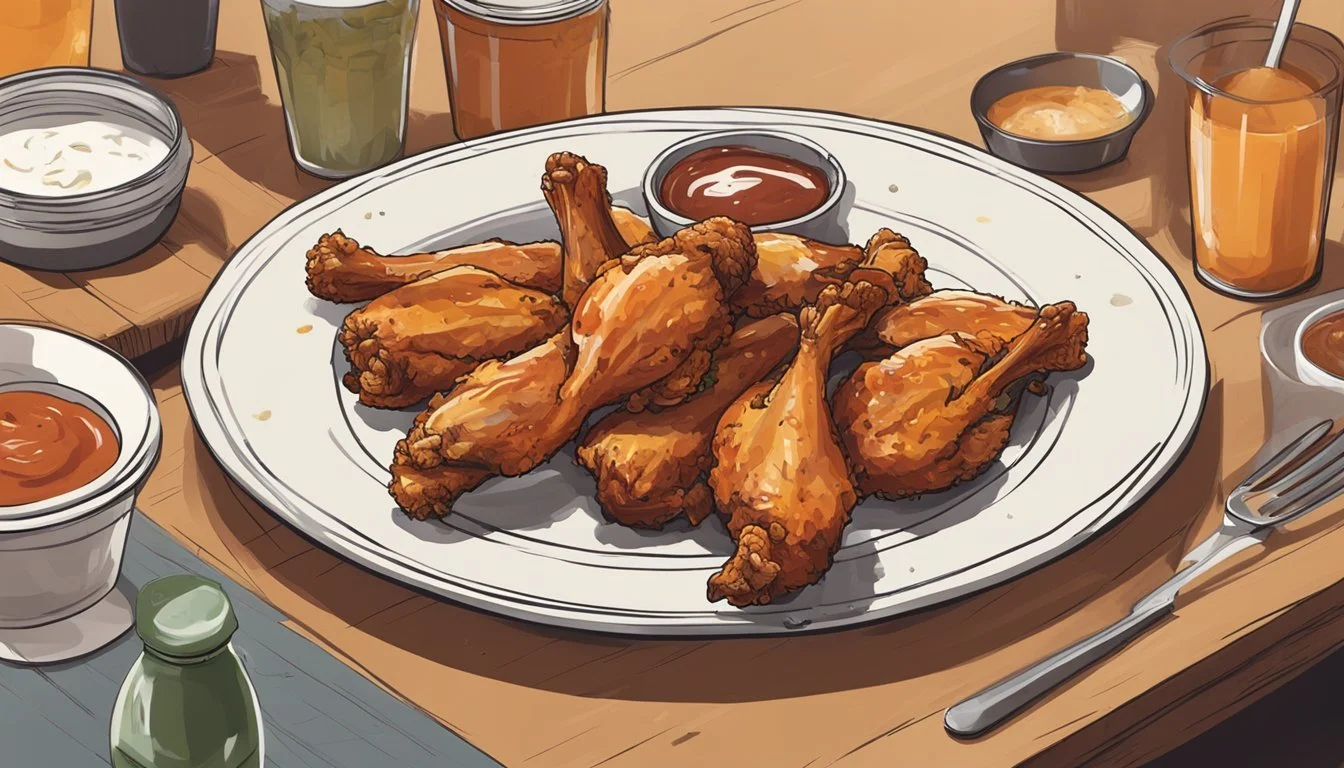How Long Do Chicken Wings Last?
A Guide to Freshness and Storage
Chicken wings are a beloved staple in many households, but ensuring they stay fresh is crucial for both taste and safety. Cooked chicken wings typically last in the refrigerator for up to four days, while raw wings can be kept for about one to two days before they should either be cooked or frozen.
Proper storage is key to maximizing their freshness. Utilize airtight containers to store chicken wings in the fridge or freezer, where they can last up to six months when frozen. Knowing these timelines helps in planning meals and avoiding food waste.
Additionally, it's essential to reheat the wings properly to enjoy their best flavor and texture. By following these guidelines, anyone can enjoy delicious, safe-to-eat chicken wings without worry.
Understanding Chicken Wing Freshness
Chicken wings can be enjoyed best when they are fresh. Maintaining freshness is key to ensuring that they are safe to eat.
Appearance: Fresh chicken wings should have a consistent color. If you notice any discolored patches, it may indicate spoilage.
Texture: The texture of fresh wings is firm. A slimy feel suggests that the wings are past their prime.
Foul Odor: Fresh chicken wings should not have a strong odor. Any foul or off smell indicates that the wings are no longer safe to consume.
State Storage Time Raw Up to 2 days in fridge Cooked Up to 4 days in fridge Frozen Up to 6 months in freezer
Key Tips:
Store raw chicken wings at a temperature between 33 and 38 degrees Fahrenheit.
Always use airtight containers or wrap the wings tightly in plastic to prevent contamination.
Check for signs like slimy texture or foul odor before cooking or consuming wings.
Storage Fundamentals for Chicken Wings
Proper storage is crucial to maintain the freshness and safety of chicken wings. Whether keeping them in the fridge or freezer, understanding the correct methods can help prevent foodborne illnesses and preserve quality.
In the Fridge
Cooked chicken wings can last 3-4 days in the refrigerator. They should be stored in an airtight container or tightly wrapped in plastic wrap or foil to prevent cross-contamination.
Ensure the fridge temperature is maintained below 41°F (5°C). Raw wings should be kept in their original packaging or a container to avoid leaks. Prompt refrigeration after cooking is essential.
Do not leave cooked wings out for more than 2 hours. If they’ve been sitting out, consume or discard them within this time frame to avoid bacterial growth.
In the Freezer
Chicken wings can be stored in the freezer for up to 6 months for optimal quality. Place the wings in airtight containers or freezer bags. Squeeze out as much air as possible to prevent freezer burn.
Mark the storage date on the container or bag. When freezing raw wings, use the original packaging if it is freezer-safe, or transfer to a freezer bag. For cooked wings, dividing them into meal-sized portions can simplify thawing.
When ready to use, thaw wings in the fridge for 24 hours. Do not refreeze thawed wings, as it can impact texture and quality. For quick defrosting, use a microwave or cold water bath, but cook the wings immediately after thawing.
Safety Guidelines for Handling Chicken Wings
Proper handling of chicken wings is crucial to prevent foodborne illnesses and ensure they are safe to eat. Key areas include avoiding cross-contamination and cooking to the correct internal temperature.
Preventing Contamination
Cross-contamination can occur when raw chicken wings come into contact with other foods, surfaces, or utensils. To reduce the risk, always store raw wings separately in airtight containers.
Use different cutting boards and knives for raw chicken and other ingredients. Clean all surfaces and utensils with hot, soapy water after handling raw wings. According to the USDA, this helps eliminate bacteria that can cause illnesses.
When marinating chicken wings, do so in the refrigerator, not at room temperature, to inhibit bacterial growth. If you need to defrost wings, do it in the fridge or use the microwave's defrost setting, never on the counter.
Cooking to the Safe Internal Temperature
Cooking chicken wings to the correct internal temperature ensures they are safe to eat. The USDA recommends an internal temperature of 165°F (74°C).
Use a food thermometer to measure the internal temperature accurately. Insert the thermometer into the thickest part of the wing, without touching the bone, as bones can give a false reading.
Whether using an oven or air fryer, ensure even cooking by arranging wings in a single layer and avoiding overcrowding. Preheat the oven or air fryer to the right temperature before adding the wings to ensure consistent cooking.
Properly cooking chicken wings not only makes them safe to eat but also enhances their flavor and texture.
Maximizing the Shelf Life of Chicken Wings
Proper storage is critical to maintaining the quality and safety of chicken wings. Whether they are refrigerated or frozen, following the correct methods can significantly extend their shelf life.
Refrigerated Chicken Wings
For refrigerated chicken wings, it's essential to keep them at a consistent temperature of 40°F (4°C) or lower. Raw chicken wings typically last 1-2 days in the refrigerator due to their perishable nature. Cooked chicken wings, on the other hand, can remain fresh for 3-4 days.
To maximize their shelf life, store the wings in airtight containers or heavy-duty aluminum foil. Proper sealing prevents air exposure and moisture loss, which can accelerate spoilage. Additionally, always place the chicken wings on a lower shelf to avoid cross-contamination with other foods.
Frozen Chicken Wings
Frozen chicken wings, whether cooked or raw, benefit immensely from optimal storage practices. Freezing extends the shelf life to up to 6 months for raw wings and up to 4 months for cooked wings. It's vital to maintain a freezer temperature of 0°F (-18°C) or lower.
To prevent freezer burn, tightly wrap the wings in plastic wrap or aluminum foil, and then place them in freezer-safe bags or airtight containers. Label each package with the date of freezing to track their expiration. For best quality, consider dividing the wings into smaller portions before freezing, which allows for easier thawing and use.
Signs of Spoilage in Chicken Wings
Identifying spoilage in chicken wings is crucial to avoid foodborne illnesses. Texture is a primary indicator. Fresh wings, whether raw or cooked, should be firm. If they feel slimy or sticky, it is a sign of spoilage and bacterial growth.
Another key sign is odor. Fresh chicken wings lack a strong aroma. In contrast, spoiled wings emit a foul odor that is unmistakable. This is true for both raw and cooked wings.
Color also provides clues. Fresh raw chicken wings should exhibit a pinkish color, while cooked wings usually appear golden or brown. Discard wings that show any discoloration such as green or gray patches.
Flavor can be affected by spoilage, though this is often noticed only after cooking. Spoiled chicken wings might taste sour or off. Even a slight change in flavor is a warning sign.
Quick Reference Table
Sign Fresh Wings Spoiled Wings Texture Firm Slimy or sticky Odor No strong smell Foul odor Color Pinkish (raw), Golden/Brown (cooked) Green or gray patches Flavor Fresh Sour or off-tasting
Always prioritize food safety by checking these signs before consumption. If any of these spoilage signs are present, it is best to discard the chicken wings.
Proper Methods for Defrosting and Reheating
To ensure the best quality and safety of your chicken wings, it is crucial to follow the proper methods for both defrosting and reheating. This guide will provide detailed steps on thawing chicken wings safely and reheating them to maintain their taste and safety.
Defrosting Chicken Wings Safely
Defrosting chicken wings correctly is essential to avoid any risk of foodborne illness. There are three primary methods for thawing: refrigerator, microwave, and cold water.
Refrigerator Method: Place the chicken wings on a plate to catch any drips and leave them in the refrigerator. This method takes the longest (around 6 hours for wings) but is the safest as it keeps the wings at a consistent, safe temperature.
Microwave Method: Use the defrost function on your microwave, checking the wings frequently to avoid cooking them. This is the fastest method but requires careful attention to prevent any parts from beginning to cook.
Cold Water Method: Submerge the wings in a bowl of cold water, changing the water every 30 minutes. This method is quicker than the refrigerator but be sure to keep the water cold to avoid any bacterial growth.
Reheating for Optimal Quality and Safety
Proper reheating methods ensure that chicken wings are enjoyed safely and with optimal taste. The recommended methods are oven, microwave, and air fryer.
Oven Method: Preheat the oven to 350°F (175°C). Place the wings on a baking sheet lined with foil. Heat for about 10-15 minutes or until thoroughly heated, ensuring even reheating without drying out.
Microwave Method: Place the wings on a microwave-safe plate, cover with a damp paper towel to retain moisture, and heat for about 2-3 minutes. Check and turn the wings halfway for even reheating.
Air Fryer Method: For a crispy finish, reheat the wings in an air fryer at 375°F (190°C) for 5-7 minutes. This method helps restore the wings' original texture and flavor while ensuring they are reheated completely.
By following these guidelines, you can enjoy chicken wings that are both safe to eat and deliciously reheated to perfection.
Advanced Tips for Preserving Chicken Wings
Preserving chicken wings effectively ensures they maintain their flavor and texture for extended periods. Key factors include marinating techniques, proper packaging, and guidelines for refreezing.
Marinating for Flavor and Preservation
Marinating involves soaking chicken wings in a seasoned liquid, not only enhancing their flavor but also aiding in preservation. Using ingredients like vinegar, citrus juice, or wine can help break down tougher meat fibers, making the wings more tender. Additionally, salt and acidic components play a role in preventing bacterial growth.
To start, combine your preferred marinade ingredients in a bowl. Place the wings in a resealable plastic bag or airtight container. Ensure the wings are fully submerged and refrigerate for at least 2 hours, or overnight for best results. This method also preps the wings for cooking, saving time.
Proper Packaging Techniques
Effective packaging prevents freezer burn and preserves the wings' quality. Begin by wrapping each wing portion tightly in plastic wrap to reduce exposure to air. Follow this by an additional layer of aluminum foil for extra protection.
Label each package with the date and contents to keep track of storage time. Store the packaged wings in an airtight container or heavy-duty freezer bags. This gives an extra layer of security against moisture loss and cross-contamination.
Best Practices for Refreezing
Refreezing chicken wings is safe if done correctly. Ensure the wings have been refrigerated and have not been at room temperature for more than 2 hours. Cooked wings can be refrozen after they've cooled completely. Place them in an airtight container or resealable freezer bag.
For raw wings, ensure they are stored in appropriate packaging as mentioned earlier. If the wings were previously frozen, refreeze them quickly to maintain quality. Always check for any signs of spoilage such as an off smell or change in texture before refreezing.
Cooking Tips for Chicken Wings
Preparing chicken wings to perfection involves attention to texture and flavor. Achieving the right level of crispiness and proper application of sauces can significantly enhance your culinary experience.
Achieving the Perfect Crispiness
For crispy chicken wings, the cooking method is crucial. Baking is a popular choice, with wings requiring around 30-40 minutes at 425°F. This method results in a crispy exterior while keeping the meat tender.
Air fryers are another excellent option. They cook wings at high temperatures with less oil, producing a similar crispiness. Set the air fryer to 400°F and cook for 25-30 minutes, shaking the basket halfway.
Properly breading the wings can also add to the desired crunch. Use a light coating of flour or breadcrumbs, ensuring even coverage. This helps to lock in moisture and enhance crispiness during cooking.
Sauce Application and Timing
The timing of sauce application can influence the taste and texture of chicken wings. Applying sauce too early can lead to soggy wings, especially when baking or using an air fryer.
For baked wings, it is best to apply the sauce in the last 5-10 minutes of cooking. This allows the flavor to penetrate without ruining the crisp texture.
Consider making a delicious sauce from hot sauce, butter, and spices. For example, a simple mix could include 1 cup hot sauce, 4 tablespoons butter, and cayenne pepper. Heat the mixture and apply it to the wings just before serving.
Breaded wings can benefit from a dry rub applied before cooking, reserving the wet sauce for post-cooking application. This helps maintain crispiness while ensuring the wings are adequately flavored.
By focusing on these specific cooking methods and timings, you can elevate the taste and texture of your chicken wings significantly.
Buying and Storing Chicken Wings from the Grocery Store
When purchasing chicken wings from the grocery store, selecting fresh, high-quality wings is crucial. Check the "sell by" date on the packaging to ensure it is not expired.
Upon bringing chicken wings home, they should be stored properly to maintain their freshness and safety. If you plan to cook them within two days, keep them in their original packaging and place them in the refrigerator at or below 40°F.
For long-term storage, chicken wings can be frozen. Wrap them tightly in an air-tight container or heavy-duty aluminum foil to prevent freezer burn. Properly stored, they can last up to 9-12 months in the freezer.
To thaw frozen wings, the safest method is to place them in the refrigerator, allowing them to defrost overnight. Do not leave them out at room temperature as this can lead to bacterial growth.
Here's a quick reference table:
Storage Method Duration Refrigerator Up to 2 days (raw) Refrigerator Up to 3-4 days (cooked) Freezer Up to 9-12 months
Always follow foodsafety.gov guidelines for storage temperatures and times to ensure chicken wings remain safe to consume. Use air-tight containers or original packaging for the best results.
Leftover Chicken Wings: Do’s and Don’ts
Do: Store Properly
Chicken wings should be promptly transferred to an airtight container and placed in the refrigerator within two hours of cooking. This prevents bacterial growth, keeping them safe to eat.
Don't: Leave Out
Never leave chicken wings at room temperature for more than two hours. This can lead to food poisoning due to harmful bacteria.
Do: Know Your Time Limits
Stored in the fridge, chicken wings are safe to eat for up to four days. Always check for any signs of spoilage.
Don't: Ignore Signs of Spoilage
If leftover chicken wings emit a sour odor or have changed in texture, discard them immediately. Consuming spoiled wings can cause foodborne illnesses.
If you can't consume the chicken wings within four days, store them in the freezer. Place them in a freezer-safe container, and they can last for up to four months.
Don't: Refreeze Thawed Wings
Avoid refreezing chicken wings that have already been thawed, as this can affect the texture and safety of the meat.
Do: Reheat Properly
Reheat leftover wings to an internal temperature of 165°F (74°C) to ensure they are safe to consume. This kills any bacteria that may have developed during storage.
Don't: Use a Microwave for Reheating
Avoid using a microwave as it can result in uneven heating. Instead, opt for an oven or an air fryer to achieve a crispy texture.
Do: Handle with Clean Hands
Always wash hands before handling leftovers to prevent introducing new bacteria to the food.
Don't: Rely on Appearance Alone
Even if chicken wings look fine, always smell and taste a small piece if unsure. When in doubt, it's safer to discard.

